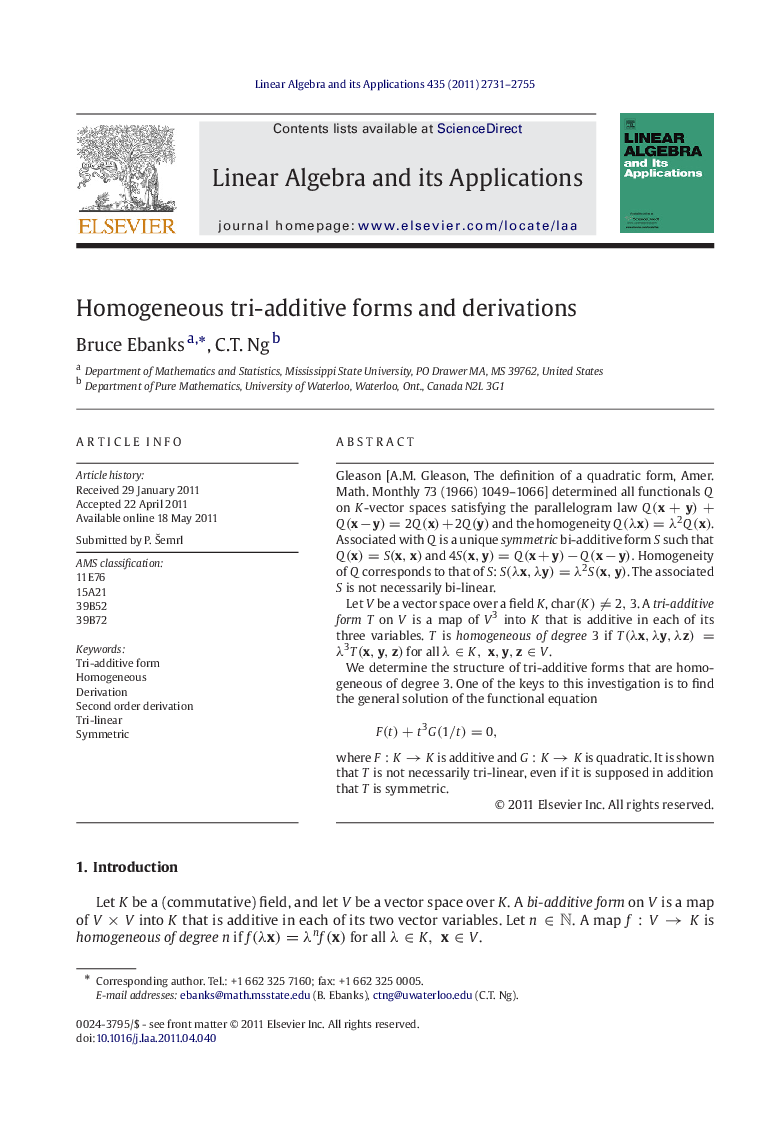| کد مقاله | کد نشریه | سال انتشار | مقاله انگلیسی | نسخه تمام متن |
|---|---|---|---|---|
| 4600711 | 1336859 | 2011 | 25 صفحه PDF | دانلود رایگان |

Gleason [A.M. Gleason, The definition of a quadratic form, Amer. Math. Monthly 73 (1966) 1049–1066] determined all functionals Q on K -vector spaces satisfying the parallelogram law Q(x+y)+Q(x-y)=2Q(x)+2Q(y)Q(x+y)+Q(x-y)=2Q(x)+2Q(y) and the homogeneity Q(λx)=λ2Q(x)Q(λx)=λ2Q(x). Associated with Q is a unique symmetric bi-additive form S such that Q(x)=S(x,x)Q(x)=S(x,x) and 4S(x,y)=Q(x+y)-Q(x-y).4S(x,y)=Q(x+y)-Q(x-y). Homogeneity of Q corresponds to that of S : S(λx,λy)=λ2S(x,y)S(λx,λy)=λ2S(x,y). The associated S is not necessarily bi-linear.Let V be a vector space over a field K , char(K)≠2,3char(K)≠2,3. A tri-additive form T on V is a map of V3V3 into K that is additive in each of its three variables. T is homogeneous of degree 3 if T(λx,λy,λz)=λ3T(x,y,z)T(λx,λy,λz)=λ3T(x,y,z) for all λ∈K,x,y,z∈V.We determine the structure of tri-additive forms that are homogeneous of degree 3. One of the keys to this investigation is to find the general solution of the functional equationF(t)+t3G(1/t)=0,F(t)+t3G(1/t)=0,where F:K→KF:K→K is additive and G:K→KG:K→K is quadratic. It is shown that T is not necessarily tri-linear, even if it is supposed in addition that T is symmetric.
Journal: Linear Algebra and its Applications - Volume 435, Issue 11, 1 December 2011, Pages 2731–2755